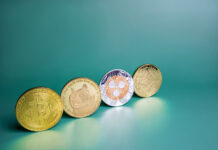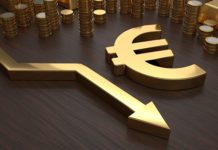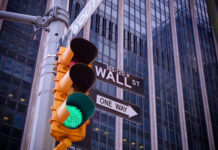Markets
Wednesday’s PMI-triggered correction didn’t went that far after all. In the run-up to Powell’s Jackson Hole address, it’s still all to play for when it comes to key technical levels. The US 2-yr yield closed above 5% following a daily gain of 5.3 bps. Longer tenors still added up to 3.3 bps in the US yesterday. Weekly jobless claims fell from 239k to 230k despite a surge in Hawaii with core durable goods orders exceeding forecasts. Fed speeches included Philly Fed Harker who repeated his view that the Fed has probably done enough and Boston Fed Collins who anticipates one more rate hike this year as the US economy has not yet slowed enough to put inflation on a sustainable trajectory downward. She added “I do think it’s extremely likely that we will need to hold for a substantial amount of time but exactly where the peak is, I would not signal right at this point.” Higher core yields weighed on risk sentiment as the Nvidia-driven tech rally fizzled out. Most European stock markets closed up to 0.8% lower, with the EuroStoxx 50’ s technical shooting star signal suggesting a new test of 4200 support is in the making. Losses in main US benchmarks varied between 1% and 1.8%. The dollar is ready for Powell’s speech, finally taking out 103.57 resistance in the trade-weighted index (DXY). The greenback extends its rally this morning, currently changing hands at 104.22 and immediately aiming for the May high at 104.70. EUR/USD lost 1.0834 support and dipped below the 200d moving average around 1.08. Next support is situated at 1.0635. In a broader context, smaller and less liquid currencies are all suffering in the run-up to today’s Jackson Hole speeches.
We expect a hawkish market reaction after Powell’s address tonight. He’ll put the tone on keeping rates at peak levels for an extended period of time. June dots and July FOMC Minutes clearly show a preference to hike policy rates one more time, which the Fed chair might flag. The neutral rate is another key topic. We stressed in June that silently, Fed governors were moving towards an increase of this theoretical rate. In December 2022, only 3 of them put it above 2.5% in the dot plot. This number increased to 4 in March and 7 (out of 18) in June. Higher real rate and a potential higher neutral rate have been the main driver of August market moves so far (core bond & stock sell-off with USD gains). Finally, a lot of (theoretical) debate is on raising the inflation target. Powell and co stressed that is absolutely not an option for the moment, which we agree to.
News and views
The Polish government yesterday approved the Budget draft for 2024. It now expects a budget deficit of 4.5% of GDP next year. That is substantially higher compared to the expected short-fall of 3.4% that was put forward in April when the country submitted its long-term financing plan to the European commission. In its budget projection, the government still expects economic growth of 3% in 2024 (from 0.9% this year). CPI inflation is seen at 6.6%. The proposal assumes a sharp rise in revenues from PLN 605bn to over PLN 680bn. On the spending side, the budget includes higher wages for public sector workers and it raises spending on social programs including child benefits and payments for pensioners. The government will also increase defense spending to an estimated 4.2% of GDP. Higher spending also should be seen in the light of the elections that will take place on October 15. A supportive fiscal policy might complicate the efforts of the National Bank of Poland to further reduce inflation (10.8% in July).
August inflation data for the Tokyo area published this morning mostly came out slightly softer than expected. The core inflation measure excluding fresh food eased from 3% to 2.8%. Headline inflation also decelerated from 3.2% to 2.9%. However, core inflation excluding both fresh food and energy remained at the multi-year peak of 4%. Utility prices were down 15% Y/Y due to government measures. At the same time, food prices were still 8.2% higher compared to the same month last year. Good prices rose 4% Y/Y. Services prices gained 2% Y/Y. For now, the BoJ still holds the line that it needs further confirmation that inflation returns to 2% in a sustained manner after it made ‘limited’ tweaks to its policy of Yield Curve control at the end of July policy meeting.














